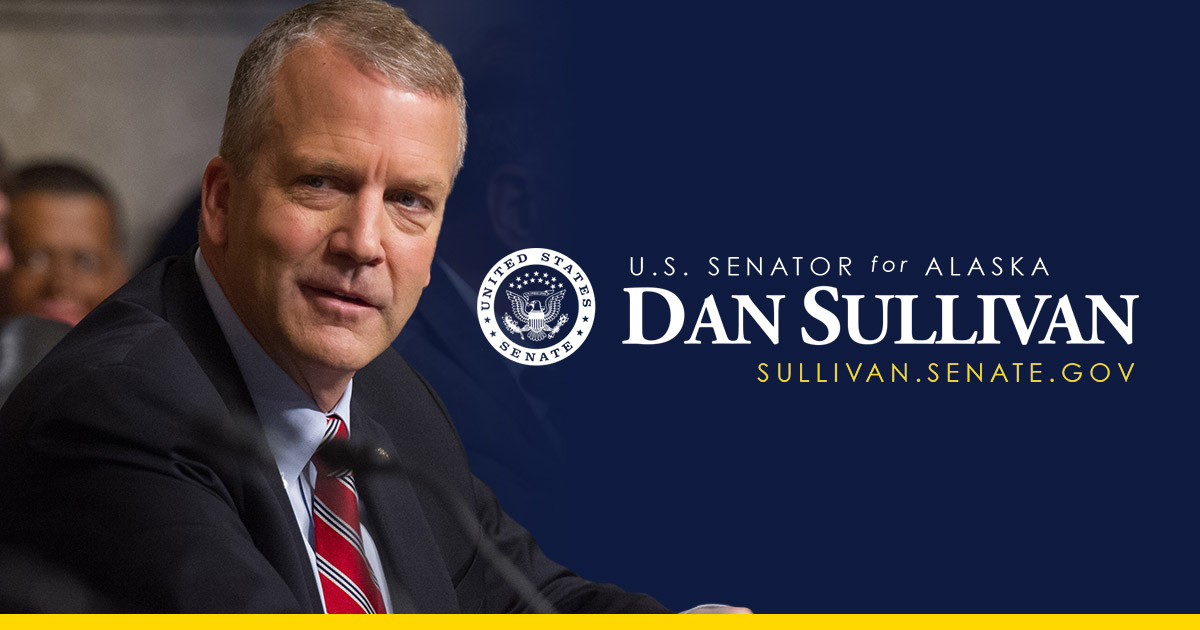Source: United States Senator for Alaska Dan Sullivan
WASHINGTON—U.S. Senator Dan Sullivan (R-Alaska) released the following statement today after the Environmental Protection Agency (EPA) published its “Final Determination” under Section 404(c) of the Clean Water Act prohibiting and restricting the use of certain waters and watersheds for the discharge of dredged and fill material from development of the Pebble mineral deposit in Southwest Alaska. Sullivan opposes the Pebble Mine, but has also opposed the EPA’s pursuit of a Section 404(c) “preemptive veto” of the project that could negatively impact other responsible resource development projects in the state.
“I opposed the Pebble Mine following the Trump administration’s thorough, fair, and objective process—based on science—which ultimately denied Pebble’s permit application,” said Senator Sullivan. “The Trump administration denial was based on the law and the specific and detailed project application in front of the federal agencies, and the importance of the world-class salmon resource that exists in the region.
“Today, the Biden administration is doing something different—using a pre-emptive veto, which raises serious legal questions and has the potential to establish a very troubling precedent for resource development on State of Alaska lands. Since my time as Alaska’s attorney general, I have consistently argued that the EPA does not have the authority to subvert the permitting process and pre-emptively veto this, or any, project in Alaska. I pressed the EPA administrator to acknowledge that today’s EPA decision does not set a precedent for other major mining and resource projects in Alaska, which he did publicly today. I encourage other Alaska elected leaders to join me in holding the entire Biden administration to this public commitment.”
Below is a timeline of important permitting milestones regarding the Pebble Mine:
- The Obama administration produced an initial Proposed Determination in 2014 to prohibit Pebble’s use of certain waters and watersheds that was subsequently withdrawn by the Trump administration in 2017.
- Pebble was allowed to go through environmental permitting, submitting a Clean Water Act permit application in December 2017.
- The U.S. Army Corps of Engineers (Corps) completed a Final Environmental Impact Statement (FEIS) for the project in July 2020.
- In August 2020, the Corps rejected Pebble’s permit application, finding the project would likely result in significant environmental degradation and have significant adverse effects on the Bristol Bay ecosystem.
- The Corps directed Pebble to submit a plan for in-kind and other compensatory mitigation within 90 days. Pebble reportedly did so, but the agency found that the project remained “contrary to the public interest” and therefore denied the permit.
- In 2021, a federal court vacated the Trump administration’s decision to withdraw the 2014 determination, enabling EPA to renew this effort.
- In September 2021, the EPA announced it was seeking to reinstate the process to make a Clean Water Act Section 404(c) determination over what it the agency called an effort to “protect certain waters in Bristol Bay, Alaska.”
- In May 2022, the EPA published a revised Proposed Determination to prohibit and restrict the use of certain waters and watersheds for the discharge of dredged and fill material from the Pebble deposit.
- On December 1, 2022, the EPA’s Region 10 Office announced a Recommended Determination under Section 404(c) of the Clean Water Act “to prohibit and restrict the use of certain waters in the Bristol Bay watershed as disposal sites for certain discharges of dredged or fill material associated with developing the Pebble Deposit,” having “determined that these discharges would be likely to result in unacceptable adverse effects on salmon fishery areas in the South Fork Koktuli (SFK) River, North Fork Koktuli (NFK) River, and Upper Talarik Creek (UTC) watersheds.”
# # #
